Would you believe that taking a poop is actually a good way to come up with a good game story? Goichi Suda has used that “technique” to come up with one of his more successful game ideas.
During the GDC 09 session “Evolving Game Design: Today and Tomorrow, Eastern and Western Game Design” hosted by former EGM Executive Editor Mark McDonald (Executive Director8-4LTD), three of the world’s most influential game designers discussed the ins and outs of development, design, story-telling, and more.
The panel consisted of Goichi Suda aka Suda51 (CEO/Game designer Grasshopper Manufacturer Inc.), Fumito Ueda (Sn. Game Design, Int’l Production Department, Sony Computer Entertainment Inc., Japan Studio and creator of Ico and Shadow of Colossus), and Emil Pagliarulo, Lead designer, Fallout 3, Bethesda Game Studio.
Mark McDonald: How do you come up with stories, plan your games, and implement your designs?
Udo-san: First and foremost we focus on graphics because it requires programming and the amount of time that demands must be addressed. When the last certain version (of the graphics engine) is done, then we can start on our goal of making the game.
Suda-san: When I plan design on games, how can I achieve my goal? That’s what I think about first. I use TV, films, and games. Then I address ideas…then I got to the bathroom and I try to poop, and then I came up with a great story. That’s a true story! (Laughter)
Mark: Now we know where No More Heroes came from. (Laughter)
Emil: At Bethesda, we like to say, “We like to play our own games.” This is the moment of truth: sitting down and playing your own game. This is the skill that’s acquired and you have to develop. And it’s only through brutal honesty that you can address your game. But you really ever know until you play the game.
Mark: During development, what parts of you game have you had to cut, you know, that had to be trimmed but that you liked or initially thought was a great idea?
Emil: Let’s see. We had this portion called Rivet City, a quest that got cut. No…That’s a bad example. Here’s a better example, Liberty Prime. He was supposed to be a giant robot five times bigger than anything else, and you were supposed to ride in his head. It was going to be awesome, and it took a lot of convincing to get people to believe the idea would work. People thought we were crazy. That never happened. We had to scale back our plans.
Ueda: With Ico, we started with one idea but it changed. The final game was more vivid. With Colossus we originally had a team gameplay plan with several characters attacking the giants at once, but in time we had to modify it. I love the development process, and in the end changing from that idea to the final idea was a good thing.
Suda: Well, I make a perfect game design plan and there is no way to change it. It’s perfect from the beginning. (Laughter)
Actually, the game design is always changing. It evolves. I have to try new things. I don’t want to cause trouble to the development team, but I do want to try new things. It’s always changing.
Mark: How and when do you know when to change your original idea during development?
Emil: It’s always a matter of trusting your own instincts. You have to truth them and try them out. They don’t always work, but it’s important to trust and go with them. There are other times you go with the team’s ideas, and the truth is the final result is due to constant back and forth input from all sides.
Look at Broken Steele, our upcoming DLC for Fallout 3. We created an ending for our game, and all games have endings, but somehow by creating a final ending for our game, we received some disappointment from our fans. Games have endings. But when playing Fallout 3, many people felt in a way that the game was an extension of Oblivion in style and design, so with our DLC we are changing the ending. That’s the great thing about DLC.
Mark, asking Suda: So how handle these types of design decisions? Do you use often just say to your team, “Hey, this is how we’re going to do it because I am the boss.”
Suda: I do use that trick sometimes. With Killer 7, the problem I faced was that when I explained the ideas I had in my mind, I wasn’t always sure that the staff understood exactly what I wanted. So as a producer I found that what’s important is that we can step back a little more than the rest of the staff and look at the game a little more objectively. Producers have a better perspective than the team. The team and focus testers are important, but it’s important for the producer to provide this more objective perspective.
Ueda: With Ico and Shadow of the Colossus, that team that came with me was very good and so we didn’t have any major differences from a world view, so I really had no opposition.
The problem I face is that I can’t really tell if the game is fun or good when we’re developing it. It’s just a series of tasks. I stand behind the testers and try to think from their points of view.
Emil: That’s a good point, Ueda-san. When I am playing during development I just see a series of systems and missed opportunities.
The best thing for Todd Howard and I is when we read a design document with ideas we hadn’t thought of, that’s when we get really excited and our brains start to churn.
Mark: Do you have any regrets about decisions have made on your games?
Mark…Anyone? No? No regrets? So we have three designers from the George W. Bush School of design. (Laughter)
Emil: We’re not as arrogant as we might be coming across here…
Suda: My main regrets were standing in line at the airport. In truth, I always wish we had more time and could do more play testing. I wish I had more time to make each game.
Ueda: Often I wish I could go back and do something again. But because of time restraints, I cannot.
Emil: I have a lot of micro-regrets. You know, like fixing little typos or change a line of dialog that I stumble back on and realize I really felt like changing it. But the problem is that the issues are small and they could change things and maybe cause a trickle effect of bugs. So, I often feel like I have to pass on those little things because our games are so big.
Mark: Where do you see game design headed in the future?
Ueda: I have a sense of emergency. The storytelling ability is important and bringing more immersion to each game is important. We need to bring players more into our games and make them crazy about our games. I look at The Matrix and they put parasites into people’s bellybuttons, and I want to do something like that in games before I die. (Laughter)
Emil: I want to achieve the idea that developers were addresses in the early ’90s with virtual glasses and the Lawnmower Man, you know, without the gadgets. I want to create a fidelity of worlds and real people that aren’t just cardboard cut-outs.
Mark: So how do you do that? Is it changing AI? Is it through visuals?
Emil: I’m not interested in 30 minute cutscenes. I look at the game Call of Duty 4; that game is looked at as a great action game, but it doesn’t get the credit it deserves for its story. That game starts out with you experiencing your own execution. That’s great. Sometimes throwing a ton of words out there is not a good idea.
Ueda-san: I think the head-mounted display idea is a good one. I want to create more immersion where players are more drawn in, but also where they can step out of that reality for a few moments before dropping back in again, and then move out again.
Emil: We can improve story-telling. It’s often more difficult and interesting to push the story through action and gameplay and not through dialog and story trees. I see us going in that direction as much as we can.
Ueda: Character conversations are difficult because you are often forced to create unreal conversations. I eliminated a lot of conversations in my games because Im not that good at it. If it’s a character who can think on their own, that’s interesting.
Mark: I one of our earlier interviews I asked you what kinds of drugs you took before you created your games.
Sudo-san: Before I write a story I take cold medicine. (Laughter)
That’s a joke. First I write a story and then I try to translate that into a game. The best thing is to have a story that is happening in the background. With Emil, I would like to open his head and look inside, because even the smallest characters in his games have their own stories. With Ueda-san, your stories are so eloquent and vast.
Mark: So what are your next games? What are you working on next?
Emil: We’re working on DLC. We’re also working on lots of things…we’re working on what stuff like, you know what new things we can destroy in Japan…(laughter). Wait, that didn’t come out right. (More laughter.)
Ueda: The sense of our new game is similar to Ico…who is your partner? Um, oh I am going to get in trouble here. Please stop asking these questions… (Laughter)
Question from the audience addressed to Ueda: Some people say your games are like the Beatles White album, they see them as art. What is your response to that?
Ueda: We are trying to create entertaining games, that’s our main goal. I came from art school, so it’s interesting to know people are seeing our games as art.
Suda: In making entertainment, it’s a hard goal to make art. Art students and teachers see these games as art and see them from an artistic perspective, that’s interesting. The power of videogames is different. We put all these lights in games and we have power to make other artists jealous, but we should have a good relationship between entertainment and art.
Emil: We’re all gamers. We know what the deal is. But I disagree with Roger Ebert. We are entertainers and art is in what we do. We’ll come onto our own. The art will come.


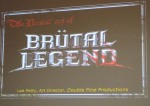







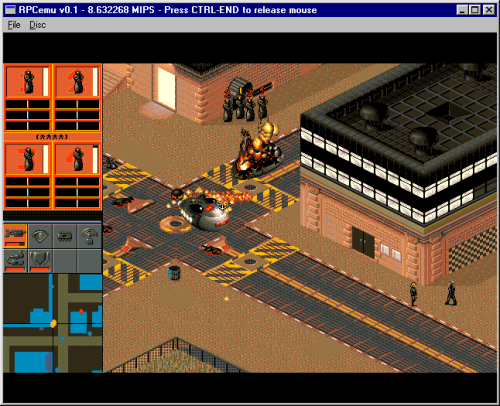
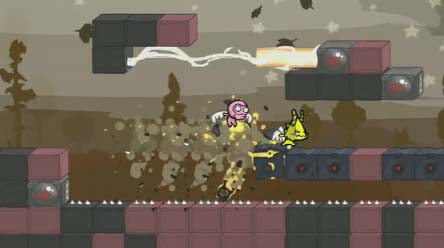
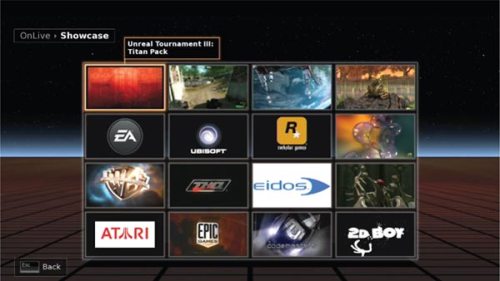
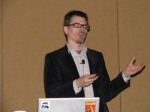

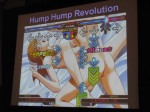

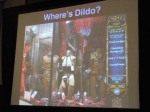



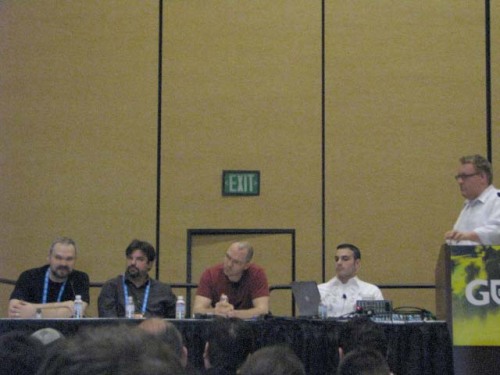
 More than just Battlefield in medieval clothing, the GDC version of Fat Princess puts players in a bright cartoonish setting, pitting two rival teams against one another in a capture the flag-style game with up to 32 players. Only here, you’re capturing the opposition’s princess, who rests rather uncomfortably in the dungeon on his resident castle. Your goal? Muster your energies, coordinate your team, and hack through the wall of enemies, plunder into their dungeon, lift the fat princess into your arms, and carry her–without dying–back to your castle.
More than just Battlefield in medieval clothing, the GDC version of Fat Princess puts players in a bright cartoonish setting, pitting two rival teams against one another in a capture the flag-style game with up to 32 players. Only here, you’re capturing the opposition’s princess, who rests rather uncomfortably in the dungeon on his resident castle. Your goal? Muster your energies, coordinate your team, and hack through the wall of enemies, plunder into their dungeon, lift the fat princess into your arms, and carry her–without dying–back to your castle.